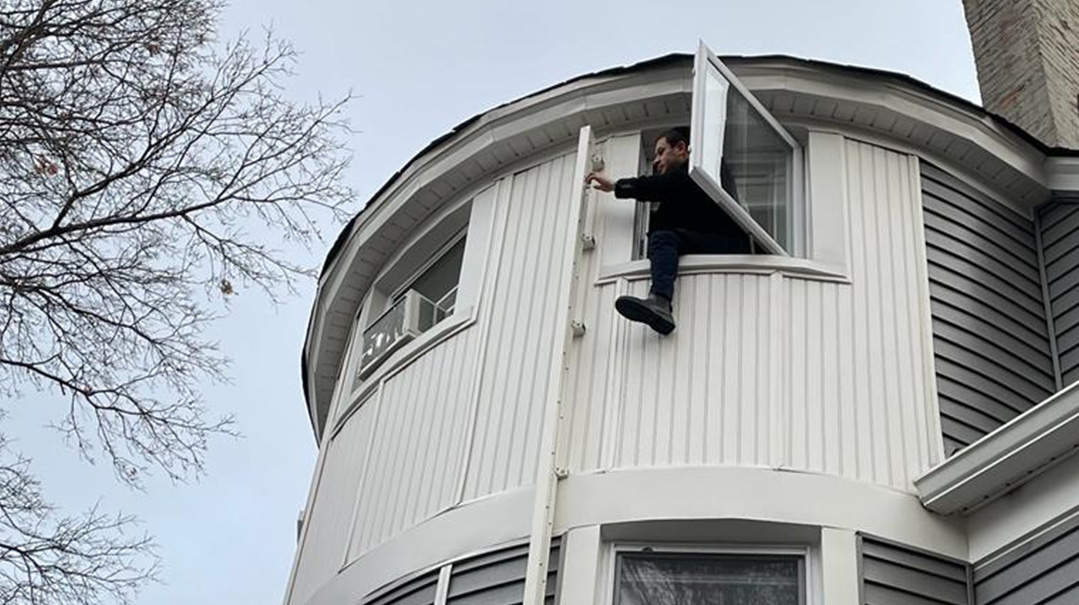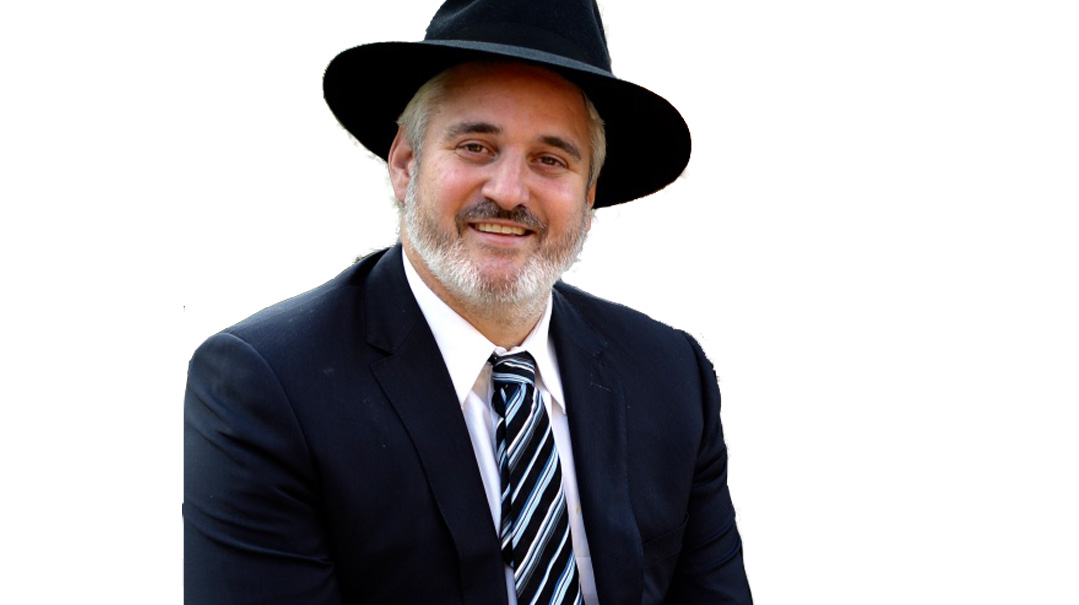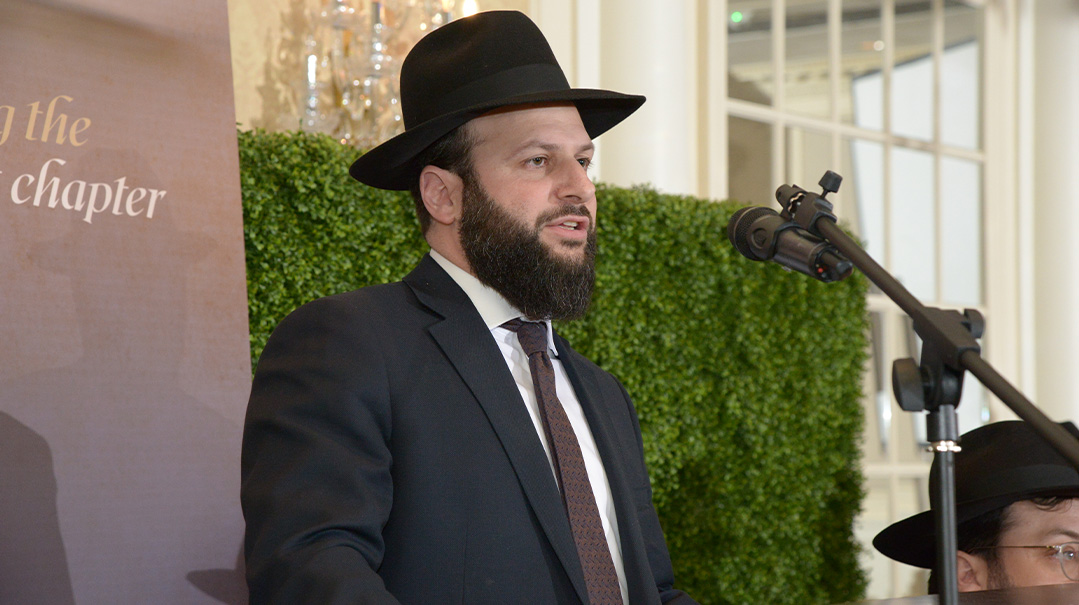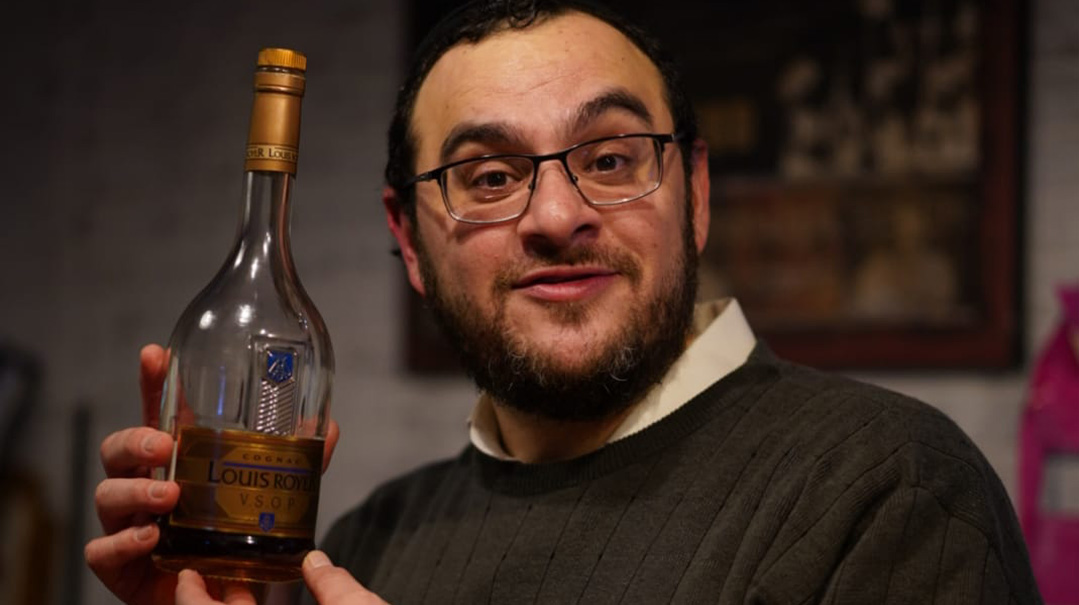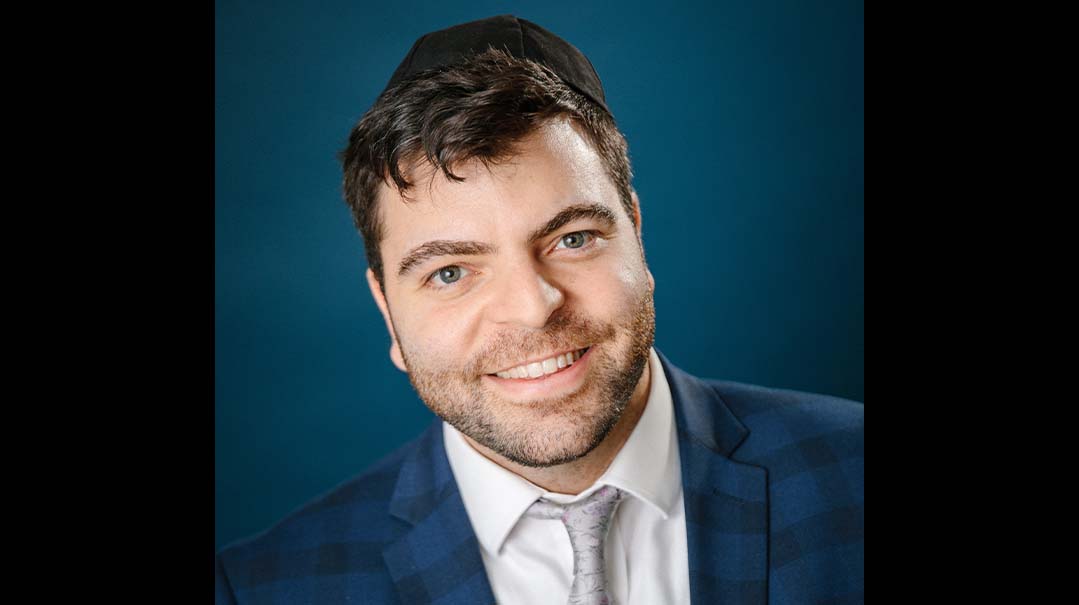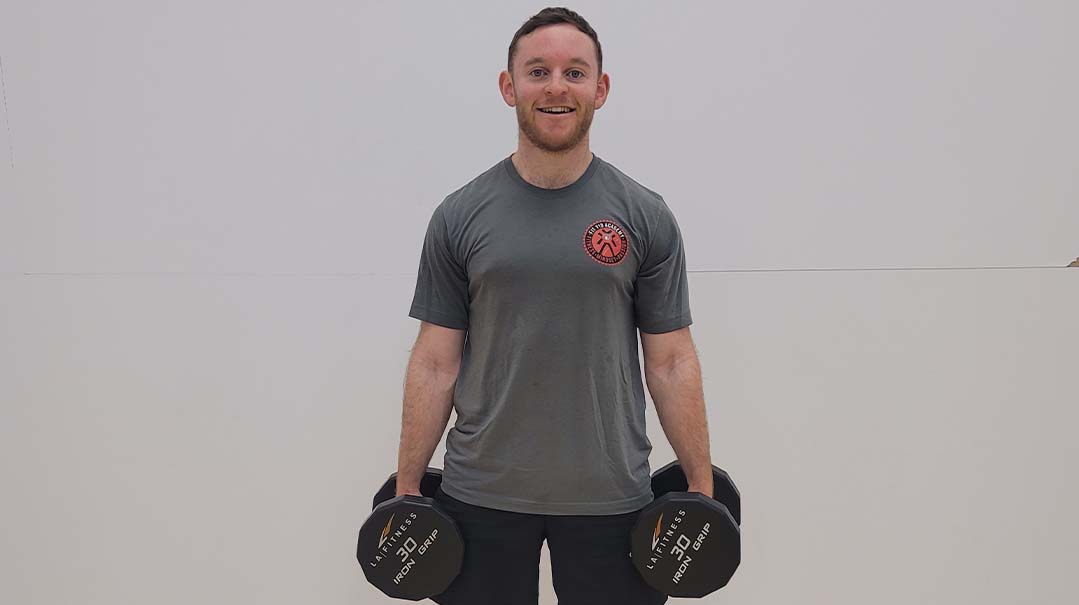10 questions for David Wiseman

A good lulav isn’t about length, especially because there’s the practicality of carrying it around, but we’ve had a few people who insisted on six or eight-foot spears.
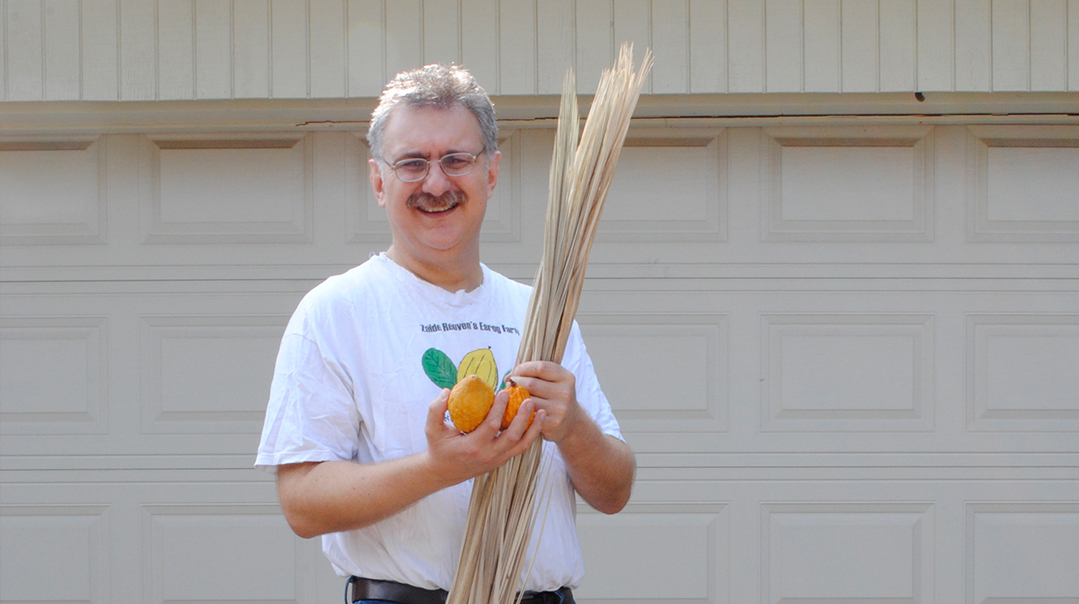
David Wiseman, a British research scientist in Dallas, Texas, is the owner of Zaide Reuven’s Esrog Farm.
How did you get started?
I was in a gemara shiur on Hoshana Rabbah, and since everyone had bentsched lulav and esrog, someone said, “Let’s taste it.” I saw seeds and asked if I can take them home to plant. I forgot all about it, but a few months later, I went to clean out my garage and there are these little trees. I started selling esrog trees as houseplants, along with a book I wrote about esrogim.
When did you go commercial?
About 15 years ago, I got a call from a lady in Newark who wanted esrogim for her church for Halloween. Pardon? Halloween is a pagan celebration of the fall festival, and her church decided to celebrate the Feast of Tabernacles — Succos — because they wanted to do something wholesome, keep the kids off the streets. I asked a sh’eilah before I started selling her posul esrogim. And then it was, why not sell kosher ones? We now supply the major shuls in Dallas and we have a steady and growing clientele on the internet. It’s an interesting story, to say a church choir leader launched this.
Have you had issues with arba minim shipments from suppliers?
Most of our esrogim come from the Kirkpatrick citrus farm in California. Rabbi Yaakov Shlomo Rothberg is a partner there, and we get a smaller number — Yanover, Moroccan, and Israeli — from other suppliers. Every few years there might be a problem with one of the minim — poor crop, quality, whatever. One year the hadassim didn’t look too good, we had a whole team of kollel men, rabbanim, and others opening each package and checking every stem. Aravos are the most sensitive to temperature and storage, and the year of 9/11, with all the plane travel issues, they arrived in a very poor state. We didn’t want to have that again, so now we grow our own as well, as a backup and for hoshanos; we can supply the whole of Dallas if need be. And lulavim we used to get from Egypt but recently it’s from California.
Why did you switch from Egypt to California?
Because of the lulav crisis eight years ago. Egypt — the source of most American lulavim — had been raising prices and threatening to lower supply. In 2005 it came to a head — someone persuaded them to reduce their output and sell to him exclusively, and then he double-sold at least one major shipment of 100,000 lulavim. Erev Rosh HaShanah I got a call — there are no lulavim. So Tzom Gedalyah I got on the first plane to New York, determined to come back with lulavim. I was running around New York, which I don’t know all that well, like a nutcase! I paid through the nose for some Egyptian lulavim I managed to find, only to find that an ikul — a rabbinic restraining order — had been placed on them while the beis din sorted out who really owned them. I found my way into the beis din and managed to get my lulavim released from the ikul and headed back home with the only kosher Egyptian lulavim in America. So I decided to stop relying on Egyptian lulavim as quickly as possible, and two years ago, we did it — we made our yetziya from Mitzrayim.
What makes a good lulav?
The Deri lulav — I don’t want to say you can do anything to them, but even if you subject them to a lot of abuse they stay closed. A good lulav isn’t about length, especially because there’s the practicality of carrying it around, but we’ve had a few people who insisted on six or eight-foot spears.
What special equipment is involved in lulav cutting?
Let’s start from the beginning: A palm tree as you picture it is very tall, the top spreads out; it’s more botanically related to grass than an apple tree. As blades of grass grow, they branch out, and a new one comes up from the middle. That’s the lulav — there could be four or five of them on one tree. The trunk doesn’t get much wider, but it does get taller — young palm trees are six feet off the ground, older ones can be 50 feet. Anyway, in the middle of all this is the unopened lulav spear. You go up into the middle of the tree with a semi-circular blade about five inches diameter, and in one swipe, hack it off.
Do you travel to California every year?
Not necessarily. Our lulavim grow in the Coachella Valley, which is similar to the Jordan Valley — it’s below sea level, there are mountains on both sides, and there’s even this high salinity lake, not unlike Yam Hamelach. Because there’s not much new water coming into the lake, salt levels have risen over the years; you can see decaying fish along the sides and actually smell them for miles. It’s blistering hot — 115 degrees —and I usually check and sort the lulavim in a hut cooled only by a couple of fans I bring along.
Is it true picking the lulav ruins the tree?
The palm expert at the Royal Botanical Gardens in London — how’s that for research? — said the tree might not look as nice once you trim it, but unless you really go into the kishkes, you won’t damage it botanically. L’mashal, if you trim your fingernails, they’ll still grow fine, but if you go all the way down to the cuticle, you can damage. But lulav-cutting does hold potential danger for the dates. The branch they grow on is quite delicate, and if the workers put ladders against the tree or go up and touch that branch too aggressively, it can affect date production.
What was your most memorable traveling experience?
I once went up and down the Jordan Valley looking for lulavim. You know the machine they use to fix streetlamp lights? A version of that takes you to the top of a palm tree for date-picking. In the Gemara there’s an opinion that the entrance to Gan Eden is in Beit She’an, which is very close to where I was. I might be forgiven for thinking it’s this canopy of date trees — it looked and it felt like it to me!
Did you ever get injured on the job?
The lulav tip is sharp — I always get finger sticks. Palm trees have long, sharp thorns so you need to watch out if you’re cutting lulavim. And the date plantations are in the desert; my car once skidded on some sand that had blown onto the road. But I don’t think anyone’s been hospitalized with a lulav injury.
(Originally featured in Mishpacha, Issue 477)
Oops! We could not locate your form.

